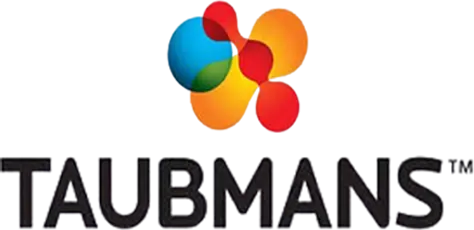Call anytime
- Newline Painting
- Glossary
Glossary – Painting Terms
The ultimate guide to painting terminology
A
Accelerator – An additive that is added into the paint to help speed up the drying process when painting.
Acrylic – Made from polymers of acrylic acid that is water resistant.
Adhesion primer – A type of primer that is used on surfaces that require strong adhesion for the paint to attach to.
B
Basecoat – The first coating of paint that is applied onto the surface after it has been prepared.
Binder – A part of the paint that allows the pigment particles to attach to the surface. It also determines the paint’s performance properties.
Blistering – Blistering occurs when the top coat of the paint begins to detach itself from the surface to create a small bubble like a “blister”. A common reason for this is due to extreme weather.
Blocking – When two newly painted surfaces come into contact and stick together.
Brush – A paintbrush is essential to any paint job. There is a vast variety of different types for specific jobs. The bristle of the brush can have a great impact on the result.
Brush marks – These are visible lines that are left on the surface after the paint has been left to dry.
Bulkhead – A partition in the ceiling that has been dropped down to hide your electrical components and other unsightly service lines.
C
Caulking – Is performed to fill and seal gaps between materials to make it watertight or airtight. This is common around kitchen benches and areas that are exposed to water or window frames to prevent air from coming through.
Chipping – When a very small part of the material is removed due to the impact of rocks or stones.
Curing – The drying process of a paint when the chemicals are reacting after being painted.
Cut in – A technique used to paint around edges and crevices of a surface with a paint brush that is too difficult to reach with a paint roller.
D
Double coat – A term referred to a surface that has been covered with two layers of paint coating.
Dipping – When an object is dipped into a pool of paint without an even spread of paint.
Drop sheet – A large cover that is used by painters to avoid getting paint on the ground or nearby furniture.
Drying time – The length of time it takes for a paint coat to completely dry before adding the another layer is added.
E
Enamel – Enamel paint can be water-based, oil-based or latex-based. It is used to produce a glossy finish for aesthetic purposes such as in a kitchen.
Epoxy enamel – A type of paint that is used to protect the surface material from rust and corrosion. It is specifically designed for metal surfaces.
Extension pole – A long pole that is used to attach to a paint roller to paint tall ceilings.
F
Fading – When a paint loses its quality and colour due to exposure to the sun and impact from the weather over time.
Feathering – Term used when slowly applying a second layer to the previous paint layer that has not been completely dried yet to blend the colour of the paint.
Flaking – When the paint peels off the surface material after blistering or cracking.
Flat paint – A type of paint that has very little or no shine. It is located on the opposite end of the glossy spectrum.
G
Galvanised – A type of metal that has a layer of zinc to protect it from rust.
Gloss – The shiny appearance of the paint when a light is reflected off the surface.
H
Hue – Another term used for colour. E.g. A light blue and a dark blue has the same “hue”.
Humidity – A measurement for the amount of water vapour that is present in the air.
I
Increment – A gradual increase in a specific proportion.
Intercoat – An intercoat is basically any paint coat located between the primer and the top coat.
J
Jamb – A side post of a door, window or fireplace.
L
Lacquer – A protective coating that is usually applied to wood or metal and forms a hard and shiny surface.
Latex – A latex-based paint is made with water and an acrylic resin binder that is used to harden the paint and turn it into a film.
Lead-based paint – A paint type that was commonly used before 1978. When the paint begins to deteriorate, it can pose as a serious health risk if inhaled or ingested. Working with lead paint requires a high level of safety precautions.
Levelling – To make the painted surface as evenly as possible.
Low sheen – Refers to the level of how shiny the finish is. A low sheen is not very shiny.
M
Marbling – A technique that is used to mimic the paint to achieve the appearance of marble.
Masking – To cover certain areas with a tape and paper that are not meant to be painted.
Matt – Refers to the level of how shiny the finish is. A matt finish is the least reflective/shiny finish.
Mildew – A black, green or white area caused by fungus growth. They are commonly found in warm and damp areas such as the bathroom.
N
Nap – Refers to the length of the fibres of a paint roller. A short nap roller is ideal for glossy finishes, whereas a long nap roller is perfect for textured surfaces.
Neutral colour – A neutral colour is used to blend into the overall colour scheme and complement it. It is a colour that is not too offsetting or strong. Typically neutral colours are beige, grey and white.
O
Oil-based paint – A type of paint that is made with either synthetic or natural oils. It is highly durable but takes longer to dry.
Opacity – Refers to how much light can pass through the paint. A high opacity paint means that less light is able to pass through and will be less transparent.
P
Peeling – Occurs when the paint has been completely detached from the surface.
Permeable – The ability to allow liquid to pass through. A non-permeable surface means that liquid cannot pass through.
Pigment – A component of the paint that gives it the colour, hardness and durability.
Primer – A paint primer is part of the preparation before paint is applied to the surface. It provides strong adhesion that glues the paint to the surface material.
Primer sealer – A special paint type that contains the combination of a primer and a sealer.
R
Resin – An important component of the paint that allows the rest of the mixture to bind together and helps the paint adhere to the surface better.
Roller – The term used to refer to the paint roller. It comes in a variety of different shape and sizes to suit certain paint jobs.
Runs – When gravity pulls the paint away from the surface because it has been applied too thickly.
Runny – Refers to the viscosity of the paint. A runny paint has a low viscosity, meaning that it has a low friction with the surface material and can move around freely.
S
Satin – Refers to the level of how shiny the finish is. It is similar to semi-gloss.
Sealer – It is used on porous surfaces to prevent liquid and stain from penetrating through.
Shade – A shade is a mixture of black with a colour to increase the darkness of the colour. It is the opposite of a tint.
Sheen – A low degree of shine from the paint.
Spatter – Referred to the tiny droplets of paint as a result of splashes.
Stripping – The act of removing the old paint.
T
Thinner – It is applied to the paint to make it runny and easier to apply. Thinner coats also mean a faster drying time.
Tint – A tint is a mixture of white with a colour to reduce the darkness of the colour. It is the opposite of a shade.
Tone – A new variation of colour as a result of mixing grey to the original colour.
Topcoat – A topcoat is the last layer of coat that is applied on the surface.
Touch-up – Refers to a quick and minor paint job to small damages.
U
Undercoat – A base layer, usually the primer, that provides an even surface to paint on and allows the top coat to blend much easily.
Undertone – A subtle colour that sits underneath another colour that affects the overall hue.
V
Varnish – A liquid finish that is used on wood and other materials to create a hard and shiny surface after drying.
Viscosity – A measurement of how well a liquid can flow on a surface. A high-viscosity will move slowly and vice versa.
W
Water-based – Refers to paint that can be cleaned up by water such as acrylic paint.
Y
Yellowing – When the colour of the paint or varnish turns to a yellow colour over time.





Get a Quote from Melbourne’s Trusted, Award-Winning Painters
Get an Instant QuoteContact
-
-
Send email
-
47 Claremont St, South Yarra
Melbourne, VIC 3141, Australia
Partners
Copyright © 2025 All Rights Reserved. Newline Painting. House Painting Melbourne. Terms & Conditions. Privacy Policy

